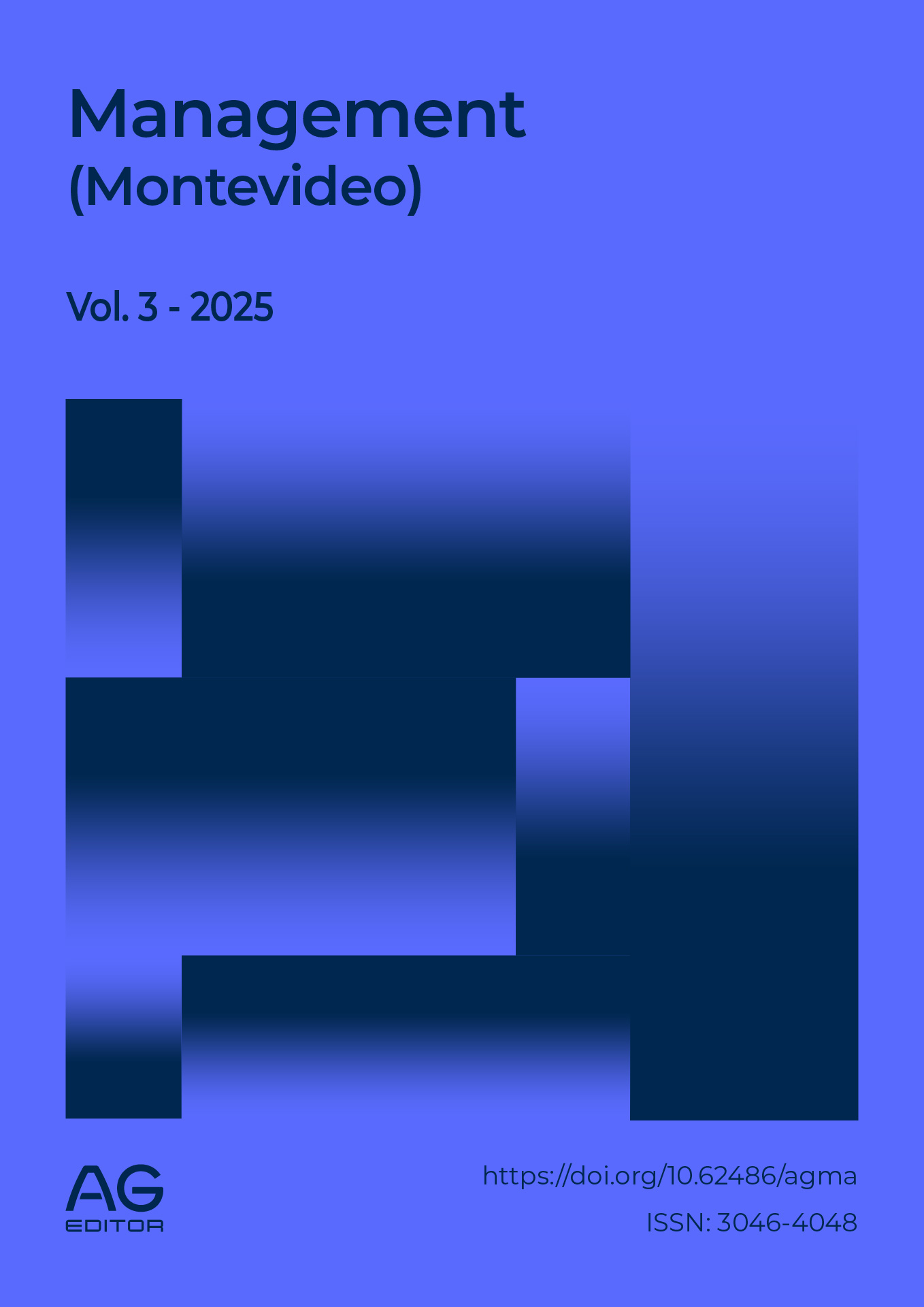Enhancing Enterprise Human Resource Management Through Intelligent Strategies Using Hybrid Deep Learning Models
DOI:
https://doi.org/10.62486/agma2025170Keywords:
Decision-making, employee performance, employee data, Intelligent Water Drops Driven Dynamic Long Short-Term Network (IntWD-DynLSTN)Abstract
Introduction: Enterprise Human Resource Management (HRM), which tracks, evaluates, and improves employee performance, is essential to the expansion of a firm. However, conventional techniques like decision trees and linear regression frequently fall short in identifying intricate, non-linear relationships in employee data, which reduces their usefulness for making decisions in real time.
Objective: The research aims to develop an intelligent, accurate, and scalable model for forecasting employee performance using a hybrid Deep Learning (DL) approach called the Intelligent Water Drops Driven Dynamic Long Short-Term Network (IntWD-DynLSTN).
Methods: A real-world HR dataset that includes employee information like task completion rates, training hours, attendance, and performance ratings is used to train the algorithm. Preprocessing included encoding categorical data, using Z-score normalization, and addressing missing values by imputation. High-level characteristics were extracted from the structured HR data using Convolutional Neural Networks (CNN). These attributes were subsequently fed into a Dynamic Long Short-Term Network (DynLSTN) to identify sequential patterns in monthly employee performance. Finally, model hyperparameters were adjusted using the Intelligent Water Drops (IntWD) technique to enhance generality and accuracy.
Results: Experimental results show that the proposed IntWD-DynLSTN model achieves higher prediction accuracy (0.98), precision (0.97), recall (0.97), and F1-score (0.98) compared to traditional and baseline methods.
Conclusions: A scalable and dependable method for forecasting employee performance is provided by the suggested hybrid DL methodology. In dynamic organizational settings, it gives HR managers a strong tool for data-driven decision-making, facilitating quick interventions and efficient workforce management.
References
Hamouche S. Human resource management and the COVID-19 crisis: Implications, challenges, opportunities, and future organizational directions. Journal of Management & Organization. 2023 Sep;29(5):799-814. https://doi.org/10.1017/jmo.2021.15 DOI: https://doi.org/10.1017/jmo.2021.15
Akwei, C., & Nwachukwu, C. (2023). Contextual factors affecting strategy & HRM practices in Nigeria. International Journal of Human Resource Management, 34(16), 3079–3122. https://doi.org/10.1080/09585192.2022.2104128 DOI: https://doi.org/10.1080/09585192.2022.2104128
Knies E, Boselie P, Gould-Williams J, Vandenabeele W. Strategic human resource management and public sector performance: context matters. International journal of human resource management. 2024 Aug 5;35(14):2432-44. https://doi.org/10.1080/2432-44. DOI: https://doi.org/10.1080/09585192.2017.1407088
Kutieshat R, Farmanesh P. The impact of new human resource management practices on innovation performance during the COVID 19 crisis: A new perception on enhancing the educational sector. Sustainability. 2022 Mar 1;14(5):2872.https://doi.org/10.1108/S-02-2022-2872. DOI: https://doi.org/10.3390/su14052872
Kim S, Vaiman V, Sanders K. Strategic human resource management in the era of environmental disruptions. Human Resource Management. 2022 May;61(3):283-93. https://doi.org/10.1002/hrm.22107 DOI: https://doi.org/10.1002/hrm.22107
Wen J, Hussain H, Waheed J, Ali W, Jamil I. Pathway toward environmental sustainability: mediating role of corporate social responsibility in green human resource management practices in small and medium enterprises. International Journal of Manpower. 2022 Jul 19;43(3):701-18. https://doi.org/10.1108/IJM-01-2020-0013 DOI: https://doi.org/10.1108/IJM-01-2020-0013
Cahyadi A, Marwa T, Hágen I, Siraj MN, Santati P, Poór J, Szabó K. Leadership styles, high-involvement human resource management practices, and individual employee performance in small and medium enterprises in the digital era. Economies. 2022 Jul 5;10(7):162. https://doi.org/10.3390/economies10070162 DOI: https://doi.org/10.3390/economies10070162
Sypniewska B, Baran M, Kłos M. Work engagement and employee satisfaction in the practice of sustainable human resource management–based on the study of Polish employees. International Entrepreneurship and Management Journal. 2023 Sep;19(3):1069-100. https://doi.org/10.1007/s11365-023-00834-9 DOI: https://doi.org/10.1007/s11365-023-00834-9
Wang T, Li N, Li H. Design and development of human resource management computer system for enterprise employees. Plos one. 2021 Dec 17;16(12):e0261594. https://doi.org/10.1371/journal.pone.0261594 DOI: https://doi.org/10.1371/journal.pone.0261594
Yang Q, Tang Y. Big data-based human resource performance evaluation model using Bayesian network of deep learning. Applied Artificial Intelligence. 2023 Dec 31;37(1):2198897. https://doi.org/10.1080/08839514.2023.2198897 DOI: https://doi.org/10.1080/08839514.2023.2198897
Ding M, Wu H. Risk prediction of enterprise human resource management based on deep learning. Human Systems Management. 2024 Nov 12;43(5):641-52. https://doi.org/10.3233/HSM-230064 DOI: https://doi.org/10.3233/HSM-230064
Li X, Zhang L, Li D, Guo D. Construction and simulation of a strategic HR decision model based on recurrent neural network. Journal of Mathematics. 2022;2022(1):5390176.https://doi.org/10.1155/2022/5390176 DOI: https://doi.org/10.1155/2022/5390176
Luo Z, Lu K. Application research and effectiveness evaluation mechanism of hybrid intelligent algorithm integrating cognitive computing and deep learning for dynamically adjusting employee performance evaluation in multi-scale organizational networks. Plos one. 2025 Dec;5(1):1-29. https://doi.org/10.1007/ journal. Pone.- 1-29 DOI: https://doi.org/10.1007/s44163-025-00285-x
Zhao Y. Development of big data-assisted effective enterprise resource planning framework for smart human resource management. Plos one. 2024 May 20;19(5):e0303297. https://doi.org/10.1371/journal.pone.0303297 DOI: https://doi.org/10.1371/journal.pone.0303297
Zhang Y, Qi E. Happy work: Improving enterprise human resource management by predicting workers’ stress using deep learning. Plos one. 2022 Apr 13;17(4):e0266373. https://doi.org/10.1371/journal.pone.0266373 DOI: https://doi.org/10.1371/journal.pone.0266373
Jiaping Y. [Retracted] Enterprise Human Resource Management Model by Artificial Intelligence Digital Technology. Economies. 2022;2022(1):6186811. https://doi.org/10.1155/2022/6186811 DOI: https://doi.org/10.1155/2022/6186811
Hu Y. Risk Prediction of Digital Human Resource Management Based on Artificial Intelligence. International Journal of Human Resource Management. 2022;30(1):23-33. https://doi.org/10.20532/cit.2022.1005456 DOI: https://doi.org/10.20532/cit.2022.1005456
Yan X, Deng X, Sun S. Analysis and simulation of the early warning model for human resource management risk based on the BP neural network. Complexity. 2022;2022(1):8838468. https://doi.org/10.1155/2022/8838468
Data Source: https://www.kaggle.com/datasets/ziya07/enterprise-hr-performance-dataset/data
Sinha H. Predicting Employee Performance in Business Environments Using Effective Machine Learning Models. IJNRD-Int. J. Nov. Res. Dev. 2024 Nov;9(9):a875-81. . https://doi.org/10.1155/2024/ a875-81
Downloads
Published
Issue
Section
License
Copyright (c) 2025 Murari Devakannan Kamalesh, Pratima Pandey, Shashikant Patil, Pushparajesh V, Santosh Kumar Behera , Nivedan Mahato, Ruhin Kouser (Author)

This work is licensed under a Creative Commons Attribution 4.0 International License.
The article is distributed under the Creative Commons Attribution 4.0 License. Unless otherwise stated, associated published material is distributed under the same licence.





